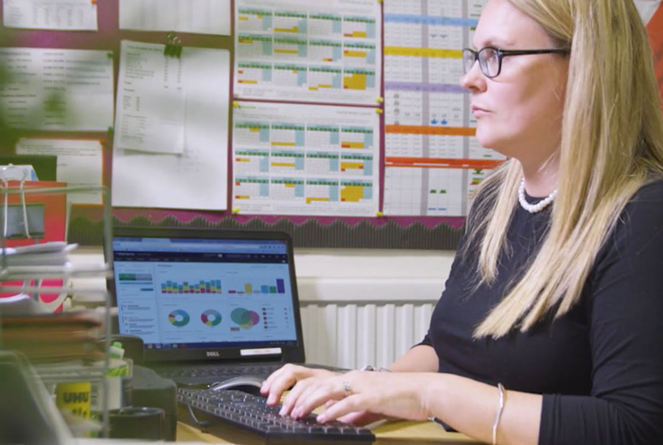Students never stop learning – and the same is just as true for teachers. Continuous professional development (CPD) helps teachers improve their understanding of how to deliver effective education, and ensures they can adapt to the changing needs of students.
However, at a time when many teachers are under time pressure, and when the development needs of each teacher can vary substantially, it can be hard to understand how best to provide a professional development service for teachers. This blog explores the importance of professional development, the benefits of CPD, and how to create a professional development plan for teachers.

What is professional development?
In short, continuous professional development consists of the strategies deployed by schools and education bodies to ensure that their staff always improve, from the beginning of their careers to the end. These strategies often involve groups of teachers working together, in much the same way that their students would, to collaboratively solve problems and explore the best way to deliver effective student outcomes.
A key part of successful CPD is to ensure that it fits alongside teachers’ existing schedules and commitments. While some parents may feel that teachers taking time away for CPD is inconvenient, the improved student results that can subsequently be demonstrated underlines its value.
Why is professional development important?
CPD is important because both educational needs and the wider world are changing all the time. This can involve both the ways in which teaching is delivered (for example, the increased use of digital devices) and the skills that students need for their careers and in their adult lives. CPD gives teachers the techniques and expertise they need to keep up with these changing priorities.
It’s also important to put a CPD strategy in place because many teachers aren’t currently checking their performance management progress regularly: according to research undertaken by TeacherTapp, only 15% of teachers do so at least once per half term.

What are the benefits of CPD for teachers?
Professional development helps teachers renew existing skills, which can be especially useful for supporting pupils with special educational needs and disabilities (SEND). According to BESA, 88% of school leaders say initial teacher training doesn’t prepare them for helping SEND pupils, so CPD can help bridge this gap.
When CPD is done right, teachers and students alike stand to benefit from:
- Better learning outcomes: as teachers gain a better understanding of what’s required
- New teaching methods: helping teachers connect with different students better
- Stronger organisational skills: enabling teachers to manage their time and complete their duties more efficiently.
Planning CPD for teachers
It can be hard to know where to start when creating a good continuous professional development plan. We recommend following this six-step process:
- Assessment: establish where a teacher is at the current stage of their career, what they have done recently to develop, and whether they are meeting their own expectations
- Identification: give teachers the time and space to work out what they want from their career in the future, and what success would look like in the short- and long-term
- Planning: work out what a teacher’s current skill set is, look for areas of upskilling, and set up a plan that encompasses job-embedded, strategic and ongoing development
- Timeline: establish a timeframe that balances achievement of annual targets and opportunities with the time constraints of the teacher in question
- Evaluation: ensure teachers can keep notes of their progress in their Professional Development Plan, and ensure the goals and timeframe in place are realistic
- Measurement: regularly assess progress against the defined targets, and consider how new targets and goals can be set as priorities change
However, all this should be put into the context of what’s right for the individual teachers and school, as priorities will vary significantly. For example, the TeacherTapp research found that 63% of schools rated inadequate include Effective Teaching in performance management reviews, compared to 51% for good or outstanding schools. What will best suit those school-specific characteristics should therefore be kept in mind.



/Primary%20school%20.jpg?width=2000&name=Primary%20school%20.jpg)








.png?width=940&height=788&name=Lingfield%20College%20Case%20Study%20(5).png)
-1.png?width=1000&height=833&name=National%20Association%20of%20Head%20Teachers%20(3)-1.png)
-3.png?width=1080&height=1080&name=Untitled%20design%20(10)-3.png)






